A reader of one of my earlier posts in this series, titled Focal Length, Field of View and Angle of View Defined, left a comment indicating he was somewhat confused by what I had written about focal length.
The commenter, Luis, wrote
Also, the rules given in books to construct the image by tracing the rays locate the image away from the focal point. That is, if you place the film or the sensor at the focal point (as defined above), you don't get any image.
I will be grateful if you clarify what is actually your definition of focal length.
To refresh everyone's memory, here is one of the images I used in my earlier post to demonstrate the concepts of field of view, angle of view and focal length.
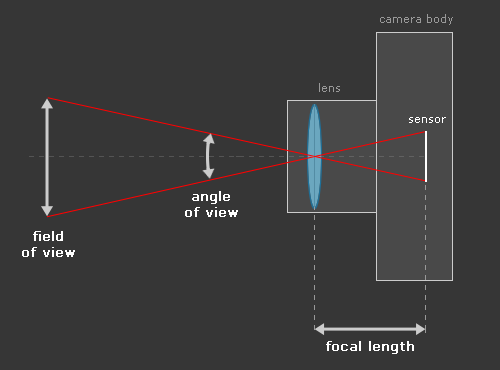
The definition I provided for focal length was
The diagrams used in my earlier blog post are simplified, showing an idealised pinhole camera, where the lens consists of a tiny hole through which all light must pass.
To better demonstrate the concept of focal length, below is an image showing a lens focused at infinity, with collimated light (parallel rays) striking the lens.
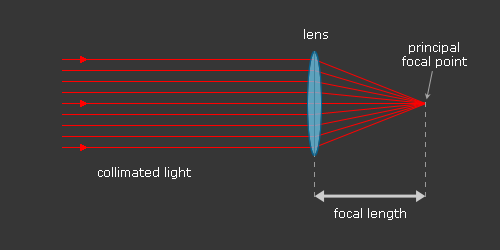
The above diagram shows all light rays being focused to a single point, namely the focal point. When the incoming light rays are all parallel (collimated light), this focal point is known as the principal focal point.
It is important to remember that the definition of focal length relies on the camera lens being focused at infinity. However, most of the photos we take do not only have parallel rays of light entering the camera, as the subjects of our photos are often a lot closer than infinity.
In order for a lens to focus rays of light that are not parallel, the lens needs to focus the light. This act of focusing moves the elements inside the lens, and as the subject distance decreases, the (actual) focal point moves further away from the lens (in reality, the camera's sensor is stationary, and the lens elements move away from it as the lens is focused).
Note that this is not changing the focal length of the lens, as the focal length is calculated when the lens is focused at infinity, ie, using the principal focal point.
The three images below show the results of a lens focusing on subjects at infinity, and when the subject gets closer. Note that the focal length is not changing - but the distance between the centre of the lens and the focal point is changing.
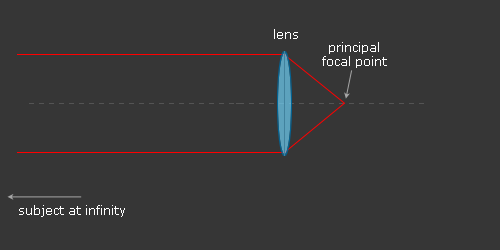
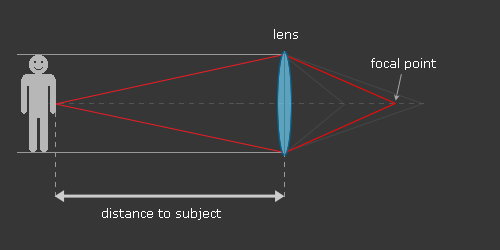
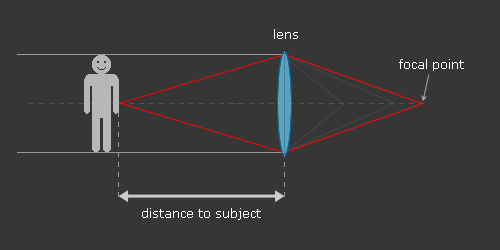
To recap, Luis asked
The principal focal point is the point where collimated light will converge when the lens is set to infinity focus, while the location of the actual focal point will vary, depending on the distance between the lens and the subject, as shown in the three diagrams above.
Luis is indeed correct that placing the sensor at the (principal) focal point, you will not get any image. Once the lens is correctly focused, placing the sensor at the (actual) focal point will allow you to obtain an image.
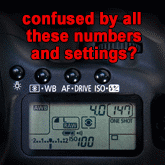


I am struggling with this relative to a new Nikon lens - the 28 to 300. Shouldn't all 300 mm lenses result in the same magnification throughout near and far focus? Getting closer to your subject with the 28-300 does not improve frame filling composition. This does not happen on the 70-300. Very unsatisfying for wildlife photography to patiently approach wildlife only to have the subject "recede". Can you explain this for me?